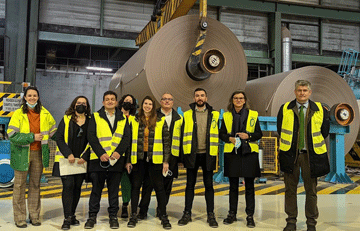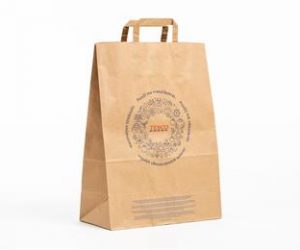

LACTALIS SUCCEEDS IN MOVING TO A CIRCULAR MODEL IN ITS FACTORIES WITH THE COOPERATION OF SAICA NATUR
The company is committed to promoting the circular economy in its production process by ensuring that the waste from its factories is reused, recycled or valorized
Lactalis, leading dairy products company, has been working for years to promote sustainable development through the reduction of emissions from its own activity, efficiency in the consumption of natural resources and energy saving.
The alliance between Lactalis and Saica Group has made it possible to implement circularity models in its cardboard and plastic flows, ensuring their correct recycling and subsequent incorporation into the market as new resources in the economy.
Thus, for example, in 2021, Saica recovered 936 tons of paper and cardboard waste as well as Lactalis bricks and beverage cartons which, after being recycled, amounted to more than 1.86 million 100% recycled and recyclable cardboard boxes that can be reused by the company in its operational activities.
On the other hand, 86.7 tons of transparent low-density polyethylene equivalent to more than 400,000 m2 of recycled stretch film were also recovered, which can be used again by the company in its bundling packs.
In order to implement and maintain this circular economy model in the Lactalis value chain it is essential to correctly separate waste into its different fractions at the source, which is carried out at the company’s plants; an active search for the best outlets for each waste stream and the involvement and awareness of the company’s entire team, especially those at its plants.
In order to learn more about these processes and to promote the circularity and recyclability of its waste, on 24th March a large representation of the Lactalis Group visited Saica’s recycling plants and its recovery projects with the aim of consolidating the relationship between the two organizations.
Lactalis Group’s continuous investments aimed at improving the sustainability of its entire value chain are leading to an improvement in the environmental impact of the company’s activity. For example, water consumption has been reduced by 2.7% in just three years. In addition to this, by using renewable energies, the Group’s factories have reduced their CO2 emissions by 10%, saving the release into the atmosphere of 26,950 tons of carbon per year, as stated in its Corporate Social Responsibility Report 2020.
Through initiatives such as these, Lactalis continues to drive the transition towards a circular production and consumption model in order to contribute to a sustainable food model for all its consumers.





